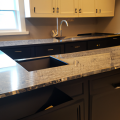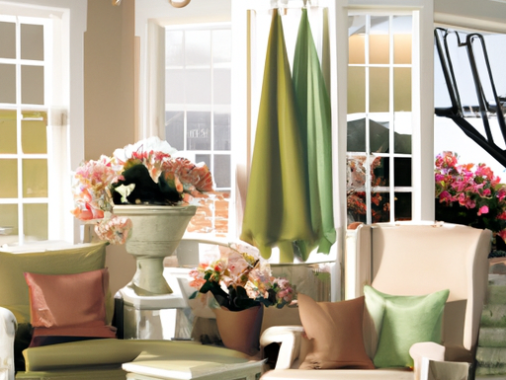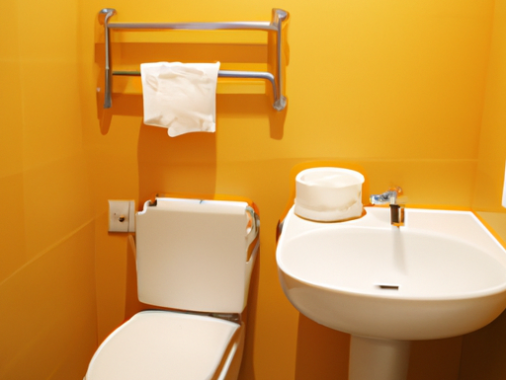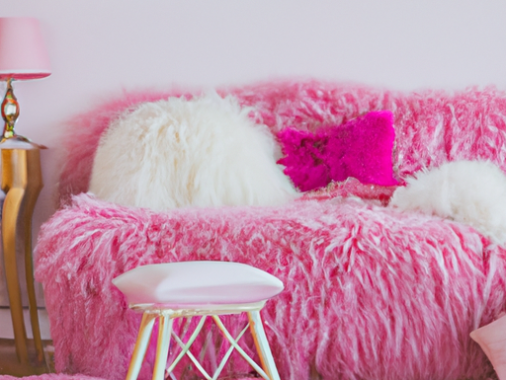-
Table of Contents
- Introduction
- How to Choose the Perfect Color for Your Living Room Accent Wall
- 10 Creative Ideas for Decorating Your Living Room Accent Wall
- The Benefits of Adding an Accent Wall to Your Living Room
- How to Create a Focal Point with Your Living Room Accent Wall
- Tips for Installing a Wallpaper Accent Wall in Your Living Room
- The Pros and Cons of Painting an Accent Wall in Your Living Room
- How to Incorporate Textured Accent Walls into Your Living Room Design
- Q&A
- Conclusion
Introduction
The living room is the heart of the home, and an accent wall can be a great way to add a unique touch to the space. An accent wall is a wall that stands out from the other walls in the room, usually because of its color, texture, or pattern. Accent walls can be used to create a focal point in the room, to add a pop of color, or to create a cozy atmosphere. With the right accent wall, you can transform your living room into a stylish and inviting space.
How to Choose the Perfect Color for Your Living Room Accent Wall
When it comes to choosing the perfect color for your living room accent wall, there are a few things to consider. First, you should think about the overall color scheme of the room. If you have a neutral color palette, you may want to choose a bolder color for your accent wall. If you have a more vibrant color scheme, you may want to choose a more subtle color for your accent wall.
Second, you should consider the size of the room. If you have a large living room, you can choose a more vibrant color for your accent wall. However, if you have a smaller living room, you may want to choose a more subtle color.
Third, you should think about the lighting in the room. If you have a lot of natural light, you can choose a brighter color for your accent wall. If you have less natural light, you may want to choose a darker color.
Finally, you should think about the furniture and decor in the room. If you have a lot of dark furniture and decor, you may want to choose a lighter color for your accent wall. If you have lighter furniture and decor, you may want to choose a darker color.
By considering these factors, you can choose the perfect color for your living room accent wall. With the right color, you can create a beautiful and inviting space that will be the perfect backdrop for your living room.
10 Creative Ideas for Decorating Your Living Room Accent Wall
1. Paint a bold color: Painting an accent wall in a bold color is a great way to add a dramatic touch to your living room. Choose a color that complements the other colors in the room, such as a deep red or a bright blue.
2. Hang a tapestry: Tapestries are a great way to add texture and color to your living room. Choose a tapestry that has a pattern or design that complements the other elements in the room.
3. Install a mural: Murals are a great way to add a unique touch to your living room. Choose a mural that reflects your personal style or the style of the room.
4. Hang a gallery wall: Gallery walls are a great way to display your favorite artwork or photographs. Choose pieces that have a common theme or color palette to create a cohesive look.
5. Install a wall decal: Wall decals are a great way to add a unique touch to your living room. Choose a decal that reflects your personal style or the style of the room.
6. Hang a mirror: Mirrors are a great way to add light and depth to your living room. Choose a mirror that has an interesting shape or design to add a unique touch.
7. Hang a wall hanging: Wall hangings are a great way to add texture and color to your living room. Choose a wall hanging that has a pattern or design that complements the other elements in the room.
8. Install a chalkboard wall: Chalkboard walls are a great way to add a fun and creative touch to your living room. Choose a chalkboard wall that has a unique shape or design to add a unique touch.
9. Hang a wall of shelves: Shelves are a great way to display your favorite books, plants, or other items. Choose shelves that have a common theme or color palette to create a cohesive look.
10. Hang a wall of art: Art is a great way to add color and texture to your living room. Choose pieces that have a common theme or color palette to create a cohesive look.
The Benefits of Adding an Accent Wall to Your Living Room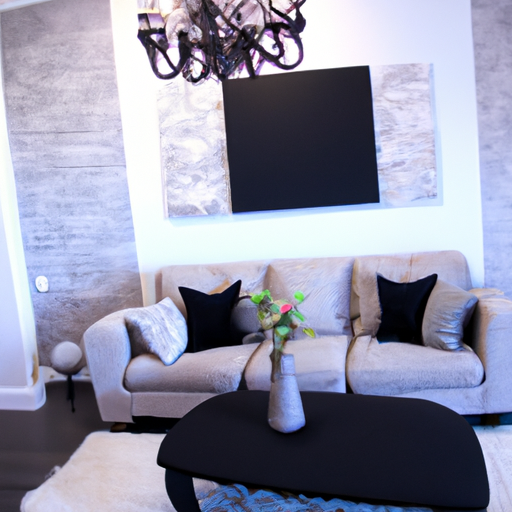
Adding an accent wall to your living room can be a great way to add a unique and stylish touch to the space. An accent wall is a wall in a room that is painted a different color than the other walls, and it can be used to create a focal point in the room. There are many benefits to adding an accent wall to your living room, including the following:
1. Visual Interest: An accent wall can add visual interest to your living room. By painting one wall a different color than the other walls, you can create a focal point in the room that will draw the eye and make the space more interesting.
2. Color: An accent wall can be a great way to add color to your living room. You can choose a color that complements the other colors in the room, or you can choose a bold color that will make a statement.
3. Texture: An accent wall can also add texture to your living room. By using a different paint finish or texture on the accent wall, you can create a unique look that will add depth and interest to the space.
4. Cost: Adding an accent wall to your living room can be a cost-effective way to update the space. It is much less expensive than painting the entire room, and it can be done in a day or two.
Adding an accent wall to your living room can be a great way to add style and interest to the space. It can be a cost-effective way to update the room, and it can add color, texture, and visual interest to the space.
How to Create a Focal Point with Your Living Room Accent Wall
Creating a focal point with your living room accent wall is a great way to add visual interest to your space. An accent wall is a wall that stands out from the other walls in the room, usually because of its color or texture. It can be used to draw attention to a particular area of the room, such as a fireplace or a piece of artwork.
When creating a focal point with your living room accent wall, there are several things to consider. First, decide what type of wall you want to use. You can choose from a variety of materials, such as wood, brick, stone, or wallpaper. Each material has its own unique look and feel, so choose one that best suits your style.
Next, decide on the color of your accent wall. You can choose a bold color to make a statement, or a more subtle color to create a calming atmosphere. If you’re using wallpaper, you can choose a pattern or texture to add visual interest.
Once you’ve chosen the material and color of your accent wall, it’s time to decide on the focal point. This could be a piece of artwork, a fireplace, or a large piece of furniture. Whatever you choose, make sure it stands out from the rest of the room.
Finally, accessorize your accent wall. You can add shelves, mirrors, or other decorative items to make it even more eye-catching. You can also hang artwork or photographs to create a gallery wall.
Creating a focal point with your living room accent wall is a great way to add visual interest to your space. With the right materials, colors, and accessories, you can create a stunning focal point that will draw the eye and make your living room stand out.
Tips for Installing a Wallpaper Accent Wall in Your Living Room
1. Choose a Wallpaper Design: Before you begin, decide on a wallpaper design that will best suit your living room. Consider the size of the room, the existing décor, and the overall look you want to achieve.
2. Prepare the Wall: Before you begin installing the wallpaper, make sure the wall is clean and free of any debris. If necessary, use a damp cloth to remove any dust or dirt.
3. Measure the Wall: Measure the wall to determine how much wallpaper you will need. Make sure to add a few extra inches to account for any mistakes or misalignments.
4. Cut the Wallpaper: Cut the wallpaper to the desired size and shape. Make sure to use a sharp blade and a straight edge to ensure a clean cut.
5. Apply the Wallpaper: Start at the top of the wall and work your way down. Use a wallpaper brush to smooth out any bubbles or wrinkles.
6. Trim the Edges: Once the wallpaper is applied, use a sharp blade to trim the edges. Make sure to use a straight edge to ensure a clean cut.
7. Seal the Wallpaper: To ensure the wallpaper lasts, use a sealant to protect it from moisture and dirt.
8. Enjoy Your Accent Wall: Once the wallpaper is installed, you can enjoy your new accent wall. Add furniture and décor to complete the look.
The Pros and Cons of Painting an Accent Wall in Your Living Room
Painting an accent wall in your living room can be a great way to add a unique touch to your home. However, it is important to consider the pros and cons of this decision before taking the plunge.
Pros
One of the main advantages of painting an accent wall in your living room is that it can be a great way to add a splash of color to the room. An accent wall can be used to create a focal point in the room, and it can also be used to draw attention to certain features or pieces of furniture. Additionally, painting an accent wall can be a relatively inexpensive way to give your living room a new look.
Cons
On the other hand, painting an accent wall can be a time-consuming and labor-intensive task. Additionally, if the color of the accent wall does not match the rest of the room, it can create an unbalanced look. Furthermore, if the accent wall is too bright or bold, it can be overwhelming and make the room feel smaller.
In conclusion, painting an accent wall in your living room can be a great way to add a unique touch to your home. However, it is important to consider the pros and cons of this decision before taking the plunge.
How to Incorporate Textured Accent Walls into Your Living Room Design
Textured accent walls are a great way to add visual interest and depth to any living room design. Whether you’re looking to create a cozy and inviting atmosphere or a modern and sophisticated look, textured walls can help you achieve the desired effect. Here are some tips for incorporating textured accent walls into your living room design.
First, consider the overall style of your living room. If you’re going for a more traditional look, consider using a textured wallpaper or paint to create a subtle yet interesting effect. For a more modern look, consider using a textured tile or stone to create a bold statement.
Next, decide on the type of texture you want to use. There are a variety of textures available, from smooth and glossy to rough and rustic. Consider the colors and patterns of your furniture and other decor to help you decide which texture will best complement your design.
Finally, consider the placement of your textured accent wall. If you’re looking to create a focal point in the room, consider placing the wall behind the sofa or in a corner. If you’re looking to create a more subtle effect, consider placing the wall behind a piece of furniture or in an area that won’t be the main focus of the room.
By following these tips, you can easily incorporate textured accent walls into your living room design. With the right texture and placement, you can create a unique and inviting atmosphere that will be sure to impress your guests.
Q&A
1. What is an accent wall?
An accent wall is a wall in a room that is painted a different color than the other walls in the room, usually to create a focal point or to add visual interest.
2. What colors are best for an accent wall?
The best colors for an accent wall depend on the style of the room and the colors of the other walls. Generally, bold colors such as red, orange, and yellow are popular choices for accent walls.
3. How do I choose the right color for my accent wall?
When choosing a color for your accent wall, consider the other colors in the room and the overall style of the room. You may also want to consider the size of the room and the amount of natural light it receives.
4. How do I create an accent wall?
Creating an accent wall is relatively easy. First, choose the wall you want to use as the accent wall. Then, paint the wall with the color of your choice. You may also want to add wall art or other decorative elements to the wall to further enhance the look.
5. What are some tips for creating an accent wall?
When creating an accent wall, consider the size of the room and the amount of natural light it receives. Choose a color that complements the other colors in the room and that will create a focal point. You may also want to add wall art or other decorative elements to the wall to further enhance the look.
6. What are some common mistakes to avoid when creating an accent wall?
Common mistakes to avoid when creating an accent wall include choosing a color that is too bright or too dark for the room, not considering the size of the room, and not considering the amount of natural light the room receives.
7. What are some creative ways to use an accent wall?
Creative ways to use an accent wall include painting the wall with a bold color, adding wall art or other decorative elements, using wallpaper, or adding a mural. You can also use an accent wall to create a focal point in the room or to add visual interest.
Conclusion
The living room accent wall is a great way to add a unique and personal touch to any living space. It can be used to create a focal point, add texture and color, and even create a sense of depth. With the right design and materials, an accent wall can be a great way to make a living room stand out and become a conversation piece.
